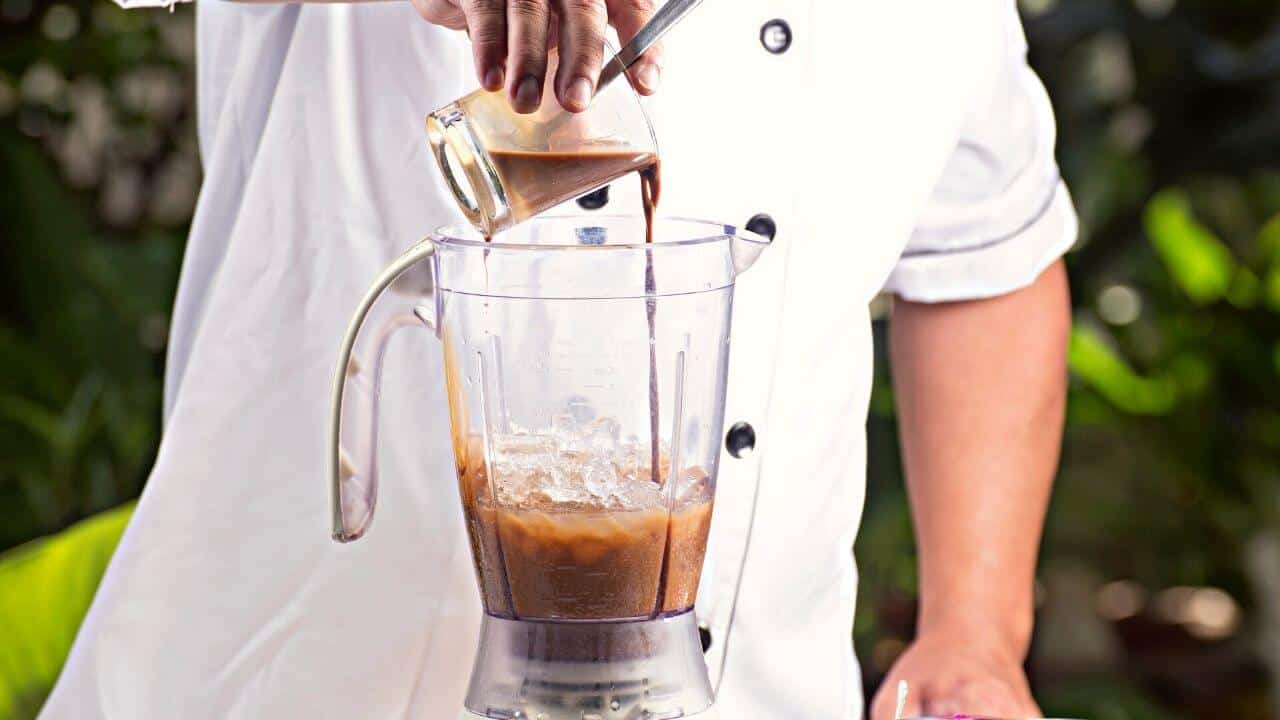Last Updated on May 19, 2023 by River Tree Farms
Your love for fizzy drinks and curious imagination may have pushed you to the question, ‘can you put soda in a blender?’ at some point. Blending soda sounds interesting whether you are simply curious or want to try out a new recipe. You can put soda in a blender. However, the blending process expels carbon dioxide hence reducing carbonation. Since hot liquids can be destructive to your blender, ensure that your soda is cold before blending.
How to Make a Soda Slurpee
Soda Slurpees are pretty easy to make. Start by gathering the following ingredients for two cups:
- A blender
- Eight ice cubes
- A refrigerator
- Three cups of soda
- ¼ cup cherry juice
- Maraschino cherries to garnish
1. Freeze a cup and a Half of Soda
Pour a cup and a half of soda into a shallow plate. Refrigerate it for at least four hours or until it hardens. The freezing time depends on the soda you’ll be using. Diet cola, for example, has a lower freezing point than regular cola.
You can also pour the soda into an ice cube tray. Let the soda sit until you have soda cubes.
2. Refrigerate the Remaining Soda
As you wait for the soda to harden, put the remaining amount in your fridge to ensure it stays cool.
3. Start Blending
Once the first batch of soda is hard, put it in a blender and add the other batch. Add a few ice cubes and the cherry juice. Start blending until you achieve the preferred texture. Pulse occasionally to get a uniform blend. If you wish to make the Slurpee thinner, add some soda. If you want to make it thicker, add a few ice cubes.
4. Serve
Pour your Slurpee into a cup and garnish with cherries. Start drinking your Slurpee while it is still cold.
Things You Should Not Put In a Blender
Many foods can be blended. For example, most fruits and vegetables can be blended for smoothie recipes. But some things shouldn’t go into the blender. Here are a few of them.
1. Hot Liquids
When working, your blender blades move very fast. Whatever comes in contact with the blades heats up in just a few seconds. Things can become dangerous if the stuff is already hot. The excessive pressure in your blender could cause an explosion. If you insist on blending hot foods or drinks, use immersion blenders. Some blenders are specifically designed for that use.
2. Raw Fiber-Rich Foods
Although nothing will go wrong if you blend broccoli and other foods filled with fiber, they may dull your blades. You’d be wise to boil such foods first. Other high-fiber foods that you should avoid putting in your blender include:
- Beans
- Cauliflower
- Celery
3. Ice Cubes
Unless you have a powerful, high-quality blender, you should avoid blending ice cubes. Standard blenders may have trouble breaking them down. You are likely to end up with uneven chunks or dull blender blades. Ice cubes can damage your pitcher completely. Before putting ice cubes in a blender, always check for the button that says ‘crush’ or ‘chop.’ If you need ice for your recipe, consider using crushed ice. You can put the cubes in a polythene bag and smash them with a hammer.
4. Whole Spices
Grinding spices in your blender is not a good idea. The shape of the blenders and the blades blades are inappropriate for crushing whole spices. You’d be wise to get a spice blender instead. Alternatively, you can have the spices crushed at the market.
5. Frozen Food
Do not blend frozen foods. You may be tempted to throw everything in the blender before defrosting when you are in a hurry. This does not only damage your blades but also makes it difficult to achieve even consistency.
In extreme instances, your blender may explode. Take your food out of the fridge a few hours before blending. That way, you can make your recipe safely and without rushing.
6. Dried Fruits
Do not put your dried fruits in the blender. If your recipe requires dried fruits, avoid blending them on your own. Their outer coatings get stuck between the blades. They could make it difficult for them to spin. Always put your dried fruits in some liquid before blending. Alternatively, you can break them into tiny pieces first.
7. Coffee Beans
Do not put coffee beans in your blender unless you have pulsed them. The beans need to be as close to the blender blades as possible. Your best bet is to grind your coffee beans in a coffee grinder. Blending coffee beans will produce out-of-whack granules. The flavor may not be right, either. Over time, your blender blades could lose their sharpness.
8. Potatoes
Do not use a blender to mash your potatoes. A potato masher would be more appropriate for that. If you use a blender, the end result will be a paste rather than mashed potatoes. Although nothing will happen to your blender, you will unlikely achieve the desired results.
9. Strong-Smelling Foods
Do not put foods with strong smells in your blender. They include chili pepper and garlic. While nothing will happen to the blender, the smell may transfer to the next foods you blend. If you have to blend them, consider cooking them first. Wash your blender thoroughly after that.
Conclusion
Can you put soda in a blender? Yes. You can. While it is not conventional, you may be able to make a delicious recipe from it. Sparkling water works well as well. Putting soda in your blender will make it flat. However, nothing else will happen. Your blender won’t explode, and the blades will remain sharp.
If you have to blend your soda with ice, ensure that your blender is strong enough to break down the ice. Alternatively, you can use crushed ice. Foods to avoid putting in your blender include hot liquids, coffee beans, frozen foods, and dried fruit.

